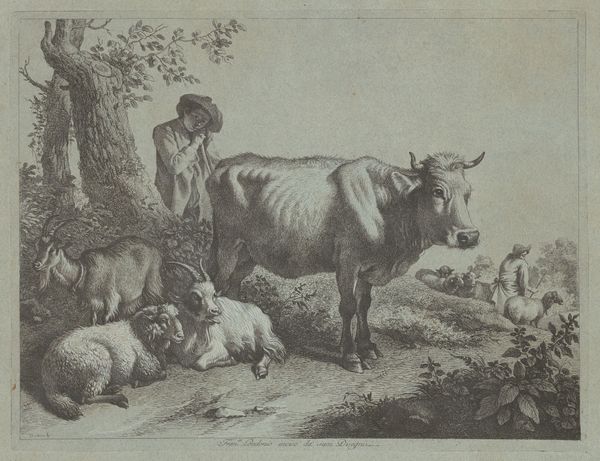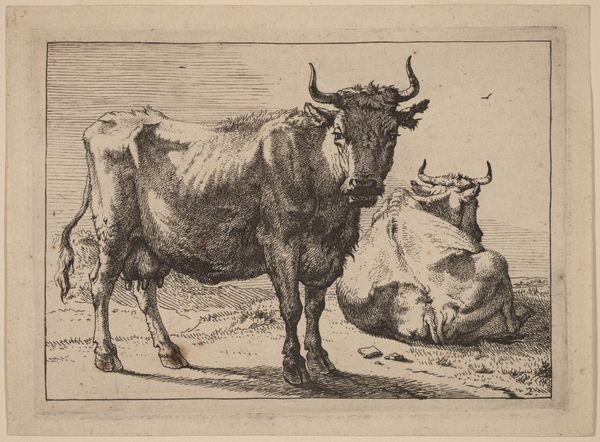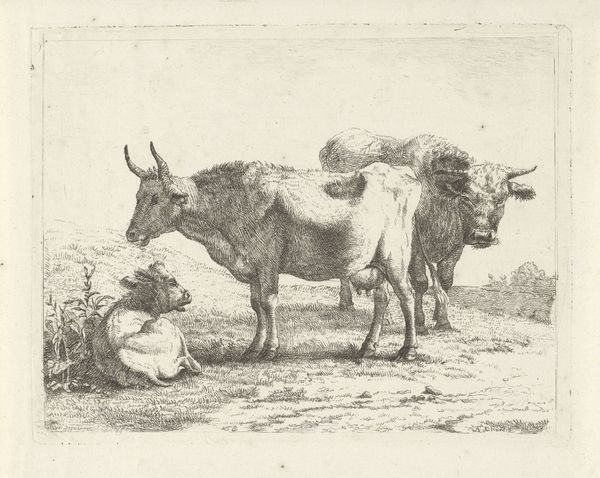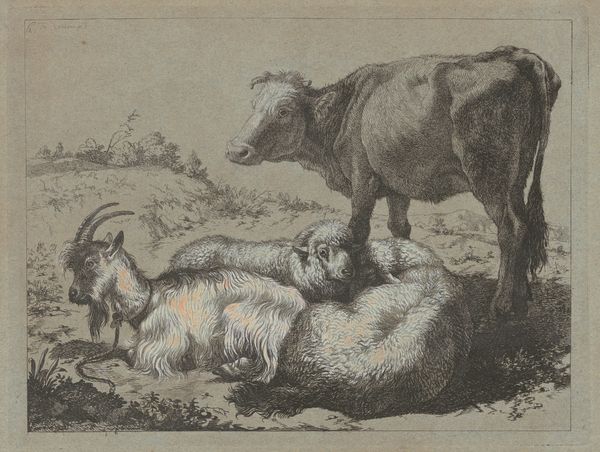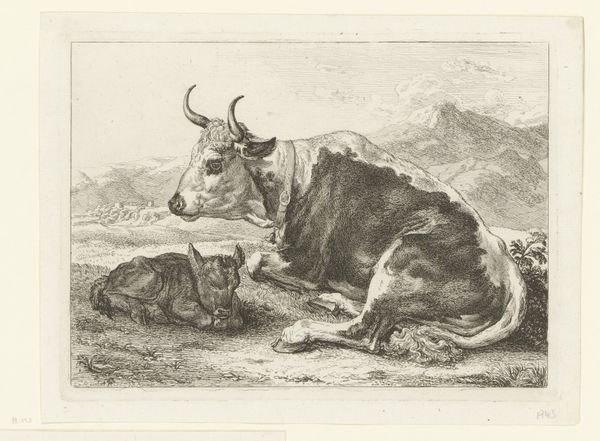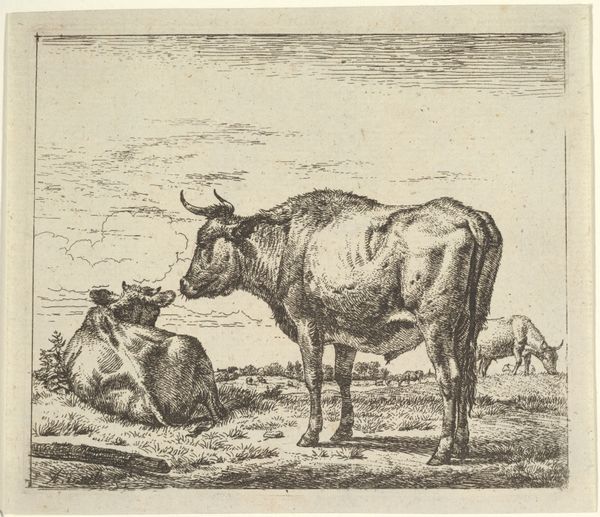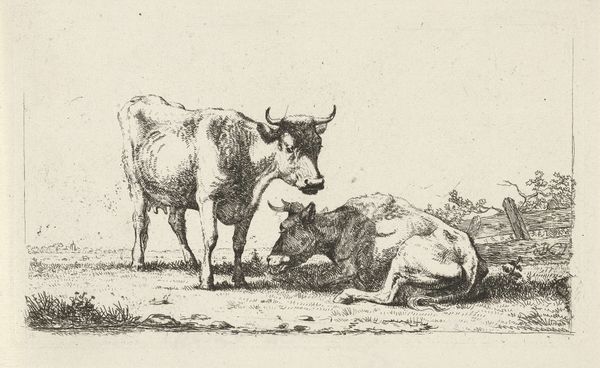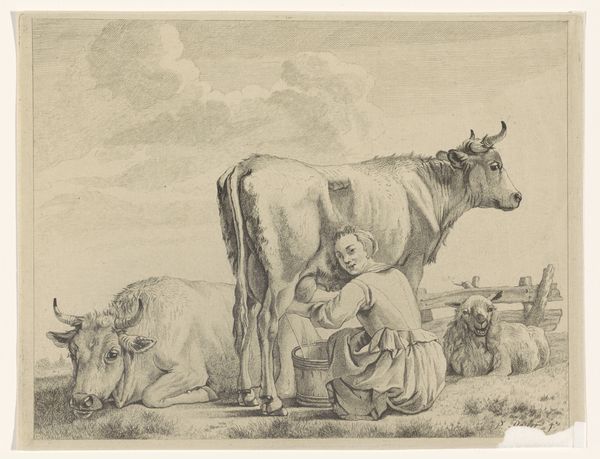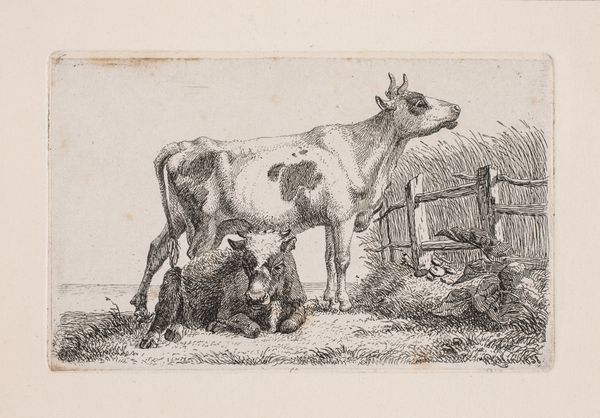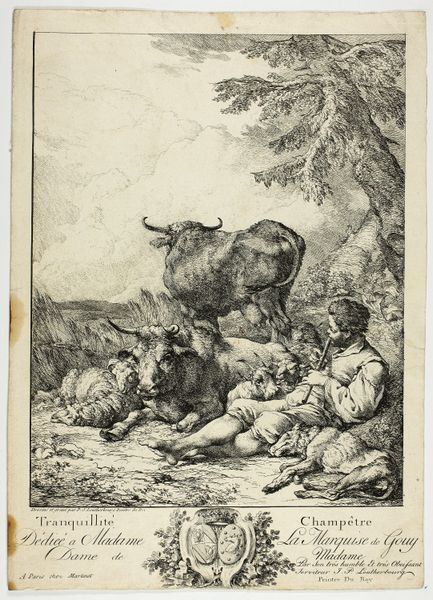
print, engraving
#
pencil drawn
# print
#
pencil sketch
#
landscape
#
pencil drawing
#
line
#
genre-painting
#
engraving
#
realism
Dimensions: plate: 21.3 × 28.7 cm (8 3/8 × 11 5/16 in.) sheet: 28 × 41.2 cm (11 × 16 1/4 in.)
Copyright: National Gallery of Art: CC0 1.0
Curator: Today we’re looking at “Seated Shepherd with a Bull and Bullock,” an engraving by Francesco Londonio from 1763. Editor: It feels very immediate, almost like a snapshot. The contrast between the crisp detail of the foreground animals and the blurred, suggested landscape is striking. There’s a real stillness here, too. Curator: Londonio, a key figure in 18th-century Italian art, frequently depicted rural life. This print demonstrates the era's fascination with pastoral scenes, shaped by social and political contexts of aristocracy romanticizing the countryside and agriculture. Editor: I wonder about the accessibility of printmaking in disseminating this vision of pastoral life. Was this image intended for a wide audience or was it geared more towards wealthy collectors interested in scenes of leisure and husbandry? The details on the animals—their musculature, the texture of their hides—speak to considerable skill. Curator: That's spot on. Engravings allowed wider circulation compared to paintings, bringing imagery of rural life into middle-class homes, thus popularizing certain idealized visions of nature and the peasant class as hardworking and simple. And in doing so reinforced social hierarchies. Editor: So it wasn't just about art; it was also about promoting specific social values. Look at the shepherd himself – seemingly idle, almost melancholic, juxtaposed with the 'productive' livestock. What kind of societal narrative does this reinforce? The image production reflects also the development of the time period, using techniques with pencils and clean lines of realism and genre styles. Curator: Precisely! The apparent nonchalance masks the labor divisions inherent in agrarian societies. This era also sees the rise of landscape as a purchasable commodity through images. Editor: The seemingly simple scene reveals itself to be laden with constructed meanings when we look beyond its aesthetic charm. Examining these prints through the lens of material production and consumption highlights how images shape social ideals and distribute ideologies. Curator: Indeed, what at first seems to be a relaxing vista holds a more complex historical context involving labor, market forces, and social stratification. Thank you. Editor: My pleasure, it’s always insightful to see how seemingly simple images have the capacity to contain many different kinds of readings.
Comments
No comments
Be the first to comment and join the conversation on the ultimate creative platform.
